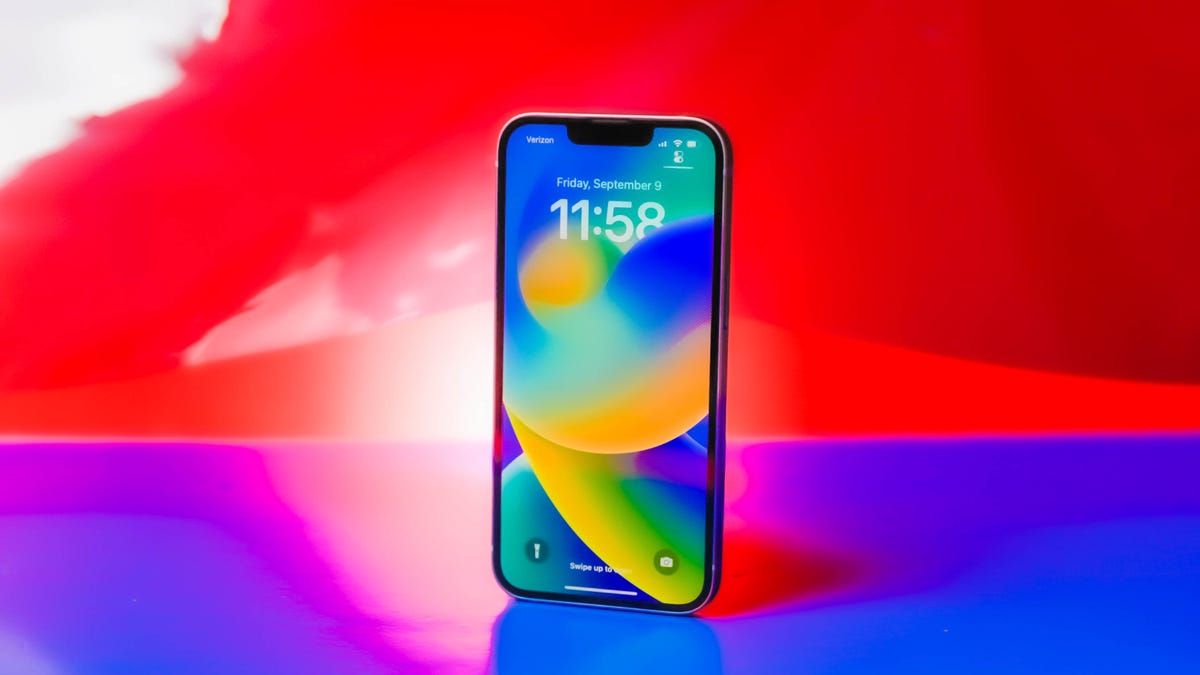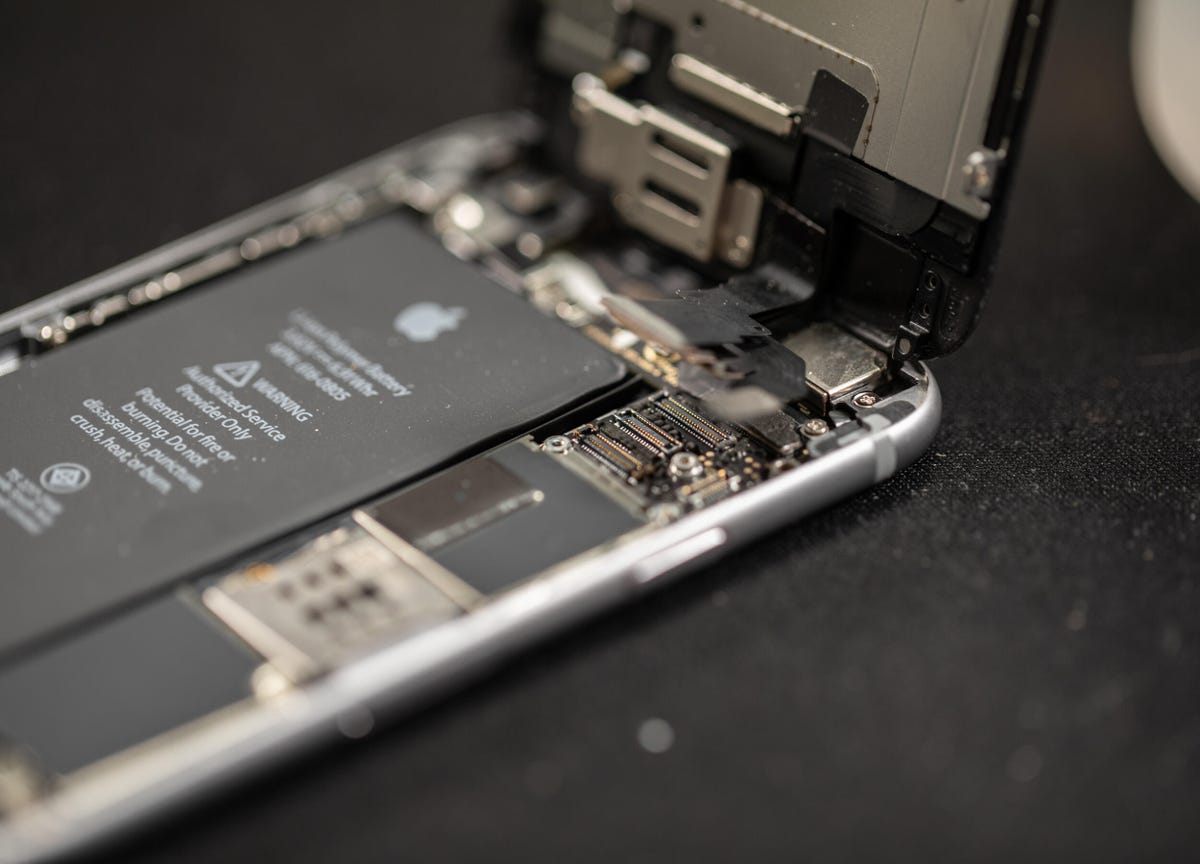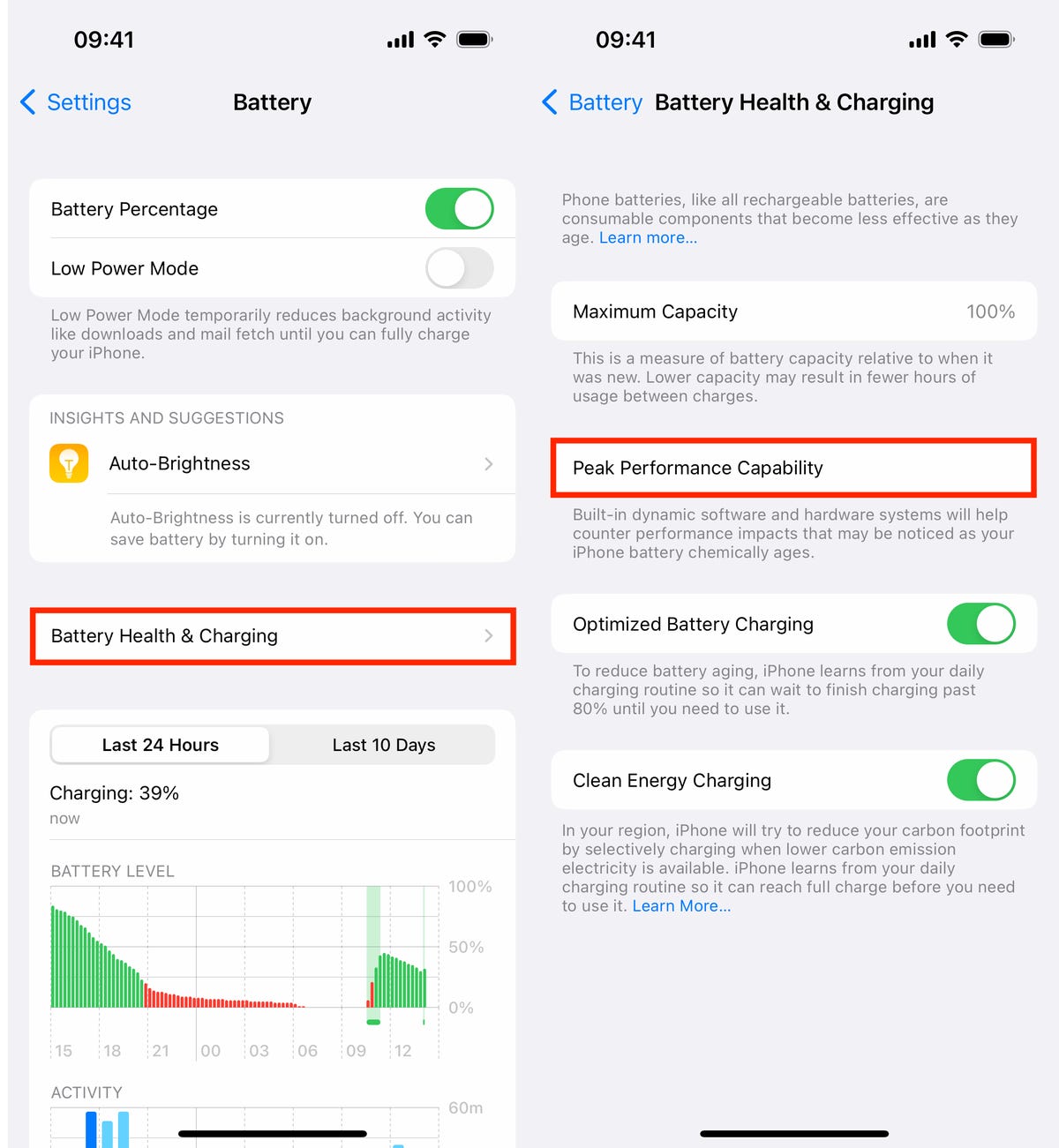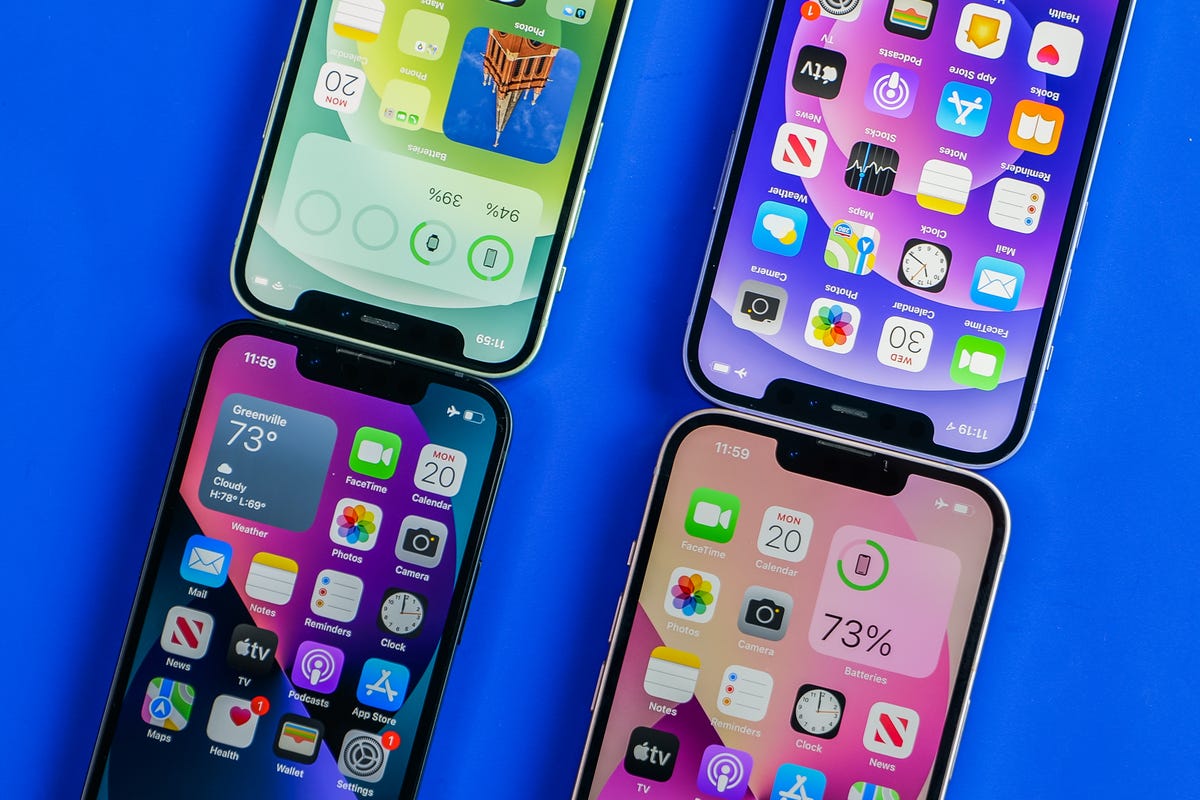Technologies
Does the iPhone Have a Battery Aging Problem?
As another round of new iPhones nears, it’s time to take a closer look at how Apple’s batteries have withstood the test of time.

As happens nearly every year, September seems poised to bring about Apple’s latest batch of iPhones. The expansion of the iPhone 14 Pro and Pro Max’s «Dynamic Island» cutout seems like a near lock for the entire iPhone 15 line, as does the long-anticipated switch from Lightning to USB-C for wired charging.
When trying to figure out if Apple’s latest and greatest is worth the upgrade, an easy check is to see if you need a new battery. As we learned not too long ago, Apple will slow down the performance of iPhones with weaker battery health in order to preserve battery life. The 2017 «batterygate» scandal led to the company paying a $113 million settlement back in 2020 after an investigation was launched by 34 states and Washington, DC.
This month, a different $500 million settlement from a class action lawsuit stemming from the same issue was cleared by a judge.
Assuming you don’t pay for the AppleCare Plus insurance program, replacing a battery on most recent iPhones dating back to 2017’s iPhone X, will run $89 from Apple (not including tax or shipping if you’re sending your phone in).
Those who pay for AppleCare Plus, which ranges from $149 for two years of coverage on a third-generation iPhone SE all the way up to $269 for two years of coverage on an iPhone 14 Pro or Pro Max, can get a battery replacement from Apple for no cost if their battery’s maximum capacity falls below 80%.
Given the myriad of trade-in deals offered by Apple and wireless carriers, it may make sense to roll that money into what you’d spend on a new phone. Others, however, may be happy just replacing the battery and holding on for another year or two. Even if you don’t plan to upgrade this cycle, it is interesting to see how well recent iPhone batteries have lasted.
What is ‘battery health’ and a ‘maximum capacity’?

Lithium-ion batteries, like the ones found in most modern electronics, are finite resources that naturally degrade over time. As Apple describes on its website, these batteries work on what is known as «charge cycles» with one «cycle» taking place when you’ve discharged «an amount that equals 100% of your battery’s capacity.»
This doesn’t mean going from 100% to empty either. As Apple notes, «you might use 75% of your battery’s capacity one day, then recharge it fully overnight. If you use 25% the next day, you will have discharged a total of 100%, and the two days will add up to one charge cycle.»
As you use up cycles by using your phone, the amount it has diminishes. On a different support page, Apple says that the iPhone is designed to hold «up to 80% of its original capacity at 500 complete charge cycles when operating under normal conditions.»
While iOS doesn’t show how many charge cycles you’ve used, its «Maximum Capacity» section gives a peak into this metric.
Apple directed CNET to its various battery support pages when contacted for comment.
How you can check your battery health

Apple gives steps for checking your battery health, and on most iPhones it can be done by going into Settings, then Battery and finally, Battery Health (or Battery Health & Charging). A «Maximum Capacity» section shows how much of your battery’s original capacity remains relative to when it was new.
If your battery is still operating normally, you’ll see that it has «peak performance capability» with small text underneath confirming that it’s «normal.»
If you’ve had a battery-related unexpected shutdown, you still may see peak performance but also a note that says Apple is using «performance management» to avoid future shutdowns. You can disable this setting if you want, though it will turn back on if another battery-related shutdown happens.
If your battery isn’t healthy, you may see a message alerting you that a replacement is needed if you want to get back to full performance or battery life. If your phone is otherwise fine for your needs, that $89 upgrade could be enough to get you back to running at full strength for a few more years.
What we learned: Your mileage will vary

While by no means a scientific test, I polled 20 CNET staffers on Aug. 2 about their iPhones, looking at which model they used, when they purchased it and what its battery health was.
Nine CNET staffers were rocking the iPhone 12 line (either an iPhone 12, 12 Pro or 12 Pro Max), with most having purchased their phones at least 30 months ago. Battery max capacity across the line was surprisingly consistent: Even the oldest devices still were displaying a maximum battery capacity of at least 85%.
My colleague Bridget Carey also polled her followers on Instagram.
Two staffers were using iPhone 13 Pros, and their experiences couldn’t be more different. CNET computer expert Lori Grunin has had her iPhone for nearly 20 months and her battery’s maximum capacity was an impressive 95%. Commerce editor Russell Holly was not as lucky, with his iPhone 13 Pro showing just 73% max capacity nearly two years after purchasing it.
Results were similarly mixed for the nine CNET users who have upgraded their devices to the iPhone 14 line. Some, like CNET’s iPhone reviewer Patrick Holland, still have 100% max capacity on his iPhone 14 Pro Max nearly 11 months later. My own iPhone 14 Pro Max, meanwhile, shows a battery max capacity of 88% over roughly the same period.
I don’t seem to be alone, either, as Wall Street Journal reporter Joanna Stern tweeted out on Aug. 11 that her iPhone 14 Pro battery was at a similar level. Comments to the tweet showed some other iPhone 14 users getting similar results.
My iPhone 14 Pro is down to 88% battery capacity after less than a year.
Is it because I use my phone too much and have already hit 450 charge cycles?! (That’s what Apple Store says.) Is it from heat from fast charging? Is there something up with the battery?
My newsletter…— Joanna Stern (@JoannaStern) August 11, 2023
Most of CNET staff’s iPhone 14 models were the iPhone 14 Pro, with the battery’s maximum capacity generally 92% or better over a time period ranging from 9 to 11 months.
As Apple notes on that support page, rechargeable batteries are made up of «consumable components that become less effective as they chemically age.»
To help prevent random shutdowns, as the battery degrades, the iPhone’s iOS software will automatically take steps including slowing down the processor when opening apps, limiting screen refresh rates and brightness and even preventing you from using the camera’s flash.
As for what you can do if your iPhone’s battery is weak, disabling some iOS features could help give you a boost. And if you don’t want to trade it in for a new model or head to a store to replace the battery, Apple has even added the ability for people to replace iPhone batteries at home.
Technologies
Sora Video Limits Got You Down? Pay Up for More, Says OpenAI
Sora has opened to everyone in the US, and OpenAI is now charging for extra AI video generations.

Soon after Sora dropped its invite-only requirement, OpenAI is already moving to monetize the popular AI video social media app. The company has introduced paid «video generation packs,» allowing you to purchase additional AI-generated videos after reaching the daily free limit.
Read also: Deepfake Videos Are More Realistic Than Ever. How Can You Spot if a Video Is Real or Sora AI?
Until now, you could generate around 30 videos a day for free or up to 100 for Pro accounts. Now, anyone who hits that cap will see a prompt to purchase extra «gens» through the App Store.
A small bundle of 10 extra generations costs roughly $4, according to Sora’s listing on Apple App Store, but OpenAI’s support page states that the exact credits used per video range based on factors like the video length and resolution.
Don’t miss any of our unbiased tech content and lab-based reviews. Add CNET as a preferred Google source.
OpenAI’s Bill Peebles confirmed the change in a post on X, citing increased demand and «unsustainable» economics as reasons behind the change. He also confirms the free quota options are likely temporary.
«Eventually, we will need to bring the free gens down to accommodate growth (we won’t have enough GPUs to do it otherwise!), but we’ll be transparent as it happens,» he wrote. «[i]n the meantime, enjoy the crazy usage limits.»
Read also: OpenAI’s Sora Is Getting Another Wave of New Features, Including Video Editing
Technologies
You Can Nab the Apple Watch SE 3 for a Record-Low $200 if You Act Fast
Amazon just knocked $49 off this budget-friendly wearable for the first time since its release.

Released alongside the Series 11 and Ultra 3, the Apple Watch SE 3 is the latest budget-friendly model in Apple’s lineup. Starting at $249, it already saves you $150 compared to the Series 11, and right now you can pick it up for even less.
Amazon is offering the biggest (and practically only) discount we’ve seen since this smartwatch hit shelves, knocking it down to a record-low $200. That’s a $49 discount, but it only applies to the starlight color. We also don’t expect this deal to last long, so be sure to get your order in soon.
Even at full price, CNET smartwatch expert Vanessa Hand Orellana called the third-gen SE a «$250 steal that delivers nearly everything you’d want from a wearable, with surprisingly few compromises.» It’s equipped with the same S10 processor as the Series 11 and Ultra 3, and offers many of the same features, like fast charging, 5G connectivity and new wellness tools. Plus, the vibrant 40mm display is always on, so you can check the time with a glance. Other helpful features include onboard Siri, fall detection and a durable design that’s water-resistant up to 50 meters.
SMARTWATCH DEALS OF THE WEEK
-
$329 (save $100)
-
$200 (save $100)
-
$200 (save $100)
-
$500 (save $150)
Why this deal matters
Deals on the latest Apple tech are far and few between, which makes this Apple Watch SE 3 discount a welcome surprise. You can pick it up for a record-low $200 right now at Amazon, which is just half the price of the flagship Series 11. If you prefer a larger display, the 44mm model is also $49 off, dropping the price to $230.
You can also find plenty of other bargains on the latest and previous-gen models in our full roundup of all the best Apple Watch deals.
Join Our Daily Deals Text Group!
Get hand-picked deals from CNET shopping experts straight to your phone.
By signing up, you confirm you are 16+ and agree to receive recurring marketing messages at the phone number provided. Consent is not a condition of purchase. Reply STOP to unsubscribe. Msg & data rates may apply. View our Privacy Policy and Terms of Use.
Technologies
Surprise Twist: Apple’s Next iPhones Might Come in These 3 Unlikely Colors
Apple seems to be choosing a deep, earthy path for its upcoming phone colors.

From cosmic orange to coffee brown? Brown, purple and burgundy will be the available colors for the iPhone 18 Pro next September, if a leak out of China proves true.
Depending on your language translator, brown could mean simply «brown» or «coffee brown,» but you get the general idea. The tidbit comes from regular leaker Digital Chat Station’s post on the Chinese microblogging platform Weibo. The post also says that black will not be an available color for the iPhone 18 Pro.
A representative for Apple did not immediately respond to a request for comment.
The iPhone 17 Pro comes in cosmic orange, deep blue and silver.
Don’t miss any of our unbiased tech content and lab-based reviews. Add CNET as a preferred Google source.
The Apple release schedule for the iPhone 18 series has been shifting, but the latest intel reports that the iPhone 18 Pro, iPhone 18 Pro Max and iPhone Fold will launch in September 2026. The iPhone 18 and iPhone 18e will follow in the spring of 2027.
If Digital Chat Station’s leak is accurate, the iPhone 18 Pro would be the first Pro edition in years without a color resembling black, white or silver.
Here are the colors for the iPhone Pro dating back to its introduction in 2019:
2019: iPhone 11 Pro/Pro Max: Midnight Green, Space Gray, Silver, Gold
2020: iPhone 12 Pro/Pro Max: Graphite, Silver, Gold, Pacific Blue
2021: iPhone 13 Pro/13 Pro Max: Graphite, Gold, Silver, Sierra Blue, Alpine Green (March 2022)
2022: iPhone 14 Pro/14 Pro Max: Space Black, Silver, Gold, Deep Purple
2023: iPhone 15 Pro/15 Pro Max: Black Titanium, White Titanium, Blue Titanium, Natural Titanium
2024: iPhone 16 Pro/16 Pro Max: Black Titanium, Natural Titanium, White Titanium, Desert Titanium
2025: iPhone 17 Pro/17 Pro Max: Cosmic Orange, Deep Blue, Silver
Not offering any version of black for Pro models might seem counterintuitive, since the iPhone 16 Pro Max black titanium version has been a big seller, and black has also been popular with iPhone 17 shoppers. But a lack of black has not hurt iPhone 17 Pro sales.
-

 Technologies3 года ago
Technologies3 года agoTech Companies Need to Be Held Accountable for Security, Experts Say
-

 Technologies3 года ago
Technologies3 года agoBest Handheld Game Console in 2023
-

 Technologies3 года ago
Technologies3 года agoTighten Up Your VR Game With the Best Head Straps for Quest 2
-

 Technologies4 года ago
Technologies4 года agoVerum, Wickr and Threema: next generation secured messengers
-

 Technologies4 года ago
Technologies4 года agoBlack Friday 2021: The best deals on TVs, headphones, kitchenware, and more
-

 Technologies4 года ago
Technologies4 года agoGoogle to require vaccinations as Silicon Valley rethinks return-to-office policies
-

 Technologies4 года ago
Technologies4 года agoOlivia Harlan Dekker for Verum Messenger
-

 Technologies4 года ago
Technologies4 года agoiPhone 13 event: How to watch Apple’s big announcement tomorrow
